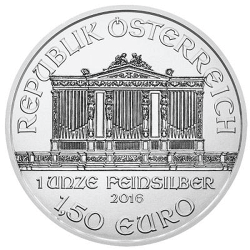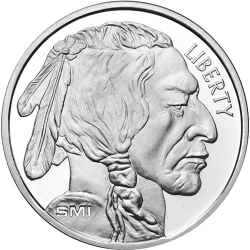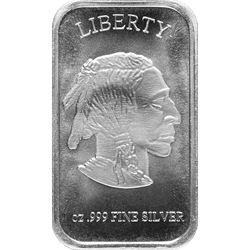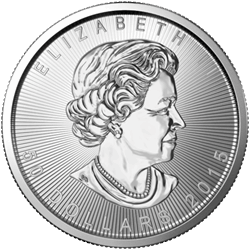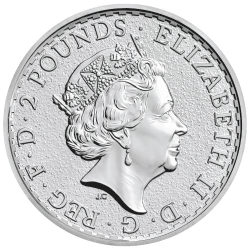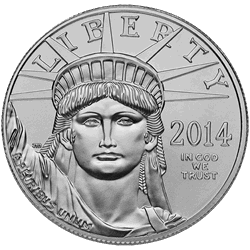1 oz Austrian Silver Philharmonic Coins
The Austrian Philharmonic silver bullion coin was recently introduced and joins a proud tradition of fine mintage coins from Europe. Its markings are very similar to its gold counterpart which was at one time the best-selling gold coin in the world.
The obverse of the coin depicts the pipe organ in the Vienna Musikverein’s Golden Hall. The reverse of the coin shows the Vienna horn, harp, bassoon, and four violins centered on a cello, all of which were instruments of the Vienna Philharmonic. Both the obverse and reverse designs were created by the chief engraver of the Austrian Mint, Thomas Pesendorfer.
Design and Features
Every detail of the Austrian Silver Philharmonic is a nod to Austrias musical legacy. The obverse side of the coin features the Great Pipe Organ located in Viennas Golden Hall, the home of the Vienna Philharmonic Orchestra. The reverse side showcases a harmonious assembly of musical instruments, including a harp, French horn, and two violins, representing the diverse sounds of the orchestra. The coins design, conceived by Chief Engraver Thomas Pesendorfer, remains consistent each year, offering a sense of familiarity and trust to collectors and investors alike.
Mintage and Availability
Since its introduction, the Austrian Silver Philharmonic has experienced varying mintage numbers, reflecting the Austrian Mints anticipation of market demand. Despite these fluctuations, the coin has maintained its status as one of the highest minted and most well-known silver bullion coins in Europe. Special variations, such as gilded and colorized versions, add an extra layer of collectibility, appealing to those seeking something beyond the standard silver coin.
History and Origin
The Austrian Silver Philharmonic was introduced in 2008, emerging as a silver counterpart to the already popular Gold Philharmonic coins. Minted by the renowned Austrian Mint, this coin holds a face value of 1.50 euros, making it the first of its kind to be denominated in euros. But what makes it truly captivating is its connection to the Vienna Philharmonic Orchestra, a symbol of Austrias rich musical heritage.
The Austrian Mint’s Legacy
The Austrian Mint, a subsidiary of the National Bank of Austria, has a storied history dating back to Duke Leopold V in the 12th century. It was Richard the Lionhearts ransom, a bounty of 15 tonnes of silver, that led to the mints establishment. Known as the Vienna Principal Mint before becoming a private company in 1989, it has been the sole mint of the republic since 1919, producing not only bullion coins but also euro coins for Austria and blanks for other mints worldwide.
Why Invest in Austrian Silver Philharmonic
Investing in Austrian Silver Philharmonic coins goes beyond owning silver; its about holding a piece of history and artistry. The coins brilliant uncirculated condition, guaranteed by the Austrian government, and its legal tender status add to its appeal. With its face value of 1.50 euros and .999 pure silver content, it stands as a testament to fine silver craftsmanship. The coins global recognition, especially in Europe, North America, and Japan, makes buying and selling relatively easy, enhancing its investment value.
Market Dynamics and Spot Price
The Austrian Silver Philharmonics value is influenced by the spot price of silver, which experiences fluctuations due to market dynamics. The coins price is competitive, making it a viable option for those looking to diversify their precious metals portfolio. Whether youre a seasoned investor monitoring the markets ebb and flow or a collector appreciating the coins aesthetic value, understanding the market dynamics is crucial.
Investment Value
Why do individuals gravitate towards the Austrian Silver Philharmonic? The answer lies in its combination of purity, design, and heritage. Each coin is guaranteed to contain .999 pure silver, offering a level of assurance to those looking to invest in precious metals. Moreover, the coins consistent design and connection to Austrian culture make it a desirable asset in markets across Japan, North America, and Europe.



